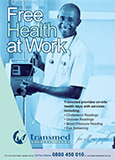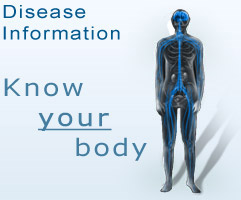Pemphigoid gestationis
What is pemphigoid gestationis?
Pemphigoid gestationis is a rare skin blistering condition that occurs in women of childbearing age. It usually presents in mid to late pregnancy (the second and third trimesters) with an itchy rash that develops into blisters. It may recur in subsequent pregnancies and also tends to recur in women who go on to take oral contraceptive therapy or during menstruation when their periods restart following pregnancy.
It was previously known as herpes gestationis, but this name has been abandoned as there is no association with herpes virus infection.
What causes pemphigoid gestationis?
Pemphigoid gestationis is an auto-immune blistering condition. This means that an individual's immune system starts reacting against his/her own skin causing the skin to split and form blisters.
Female hormones (particularly oestrogen) are thought to aggravate the reaction and this may be why it often presents during pregnancy when oestrogen levels rise.
Does pemphigoid gestationis run in families?
No, but there is a link with other auto-immune conditions (which may run in families) such as thyroid disease and pernicious anaemia.
What are the symptoms of pemphigoid gestationis?
Itching is common and often starts around the belly button (umbilicus) during mid- to late pregnancy (13 to 40 weeks gestation). Itching may be followed by a rash consisting of large red inflamed areas of skin and then later blisters may develop.
What does pemphigoid gestationis look like?
There is often an urticarial rash with wheals (like hives from nettles), and large raised red patches (plaques) commonly occurring on the trunk, back, buttocks and limbs. The face, scalp and mucous membranes (mouth and genital area) are usually not affected. Large tense blisters then occur on the red patches within one to two weeks, and are also seen on palms and soles. The blisters contain clear fluid though occasionally this can be bloodstained. The blisters usually heal without scarring.
How will pemphigoid gestationis be diagnosed?
Usually the appearance and behaviour of the rash is very typical but in early stages of the condition without blisters, the rash can look similar to other skin conditions. Your dermatologist will take a sample of skin and a blood sample for special tests to detect the antibodies that will confirm the diagnosis.
Can pemphigoid gestationis be cured?
No, but it can be suppressed with treatment. Symptoms often improve towards the end of pregnancy but then 80% of women will experience a flare of the rash around the time of delivery. In most cases symptoms resolve days or weeks after giving birth, but in some women the condition may remain active for months or years and may require continued treatment. Restarting menstruation, use of oral contraceptive therapy and further pregnancies can all cause flare-ups of the condition.
How can pemphigoid gestationis be treated?
The primary aim of treatment is to relieve itching, prevent blister formation and treat any secondary infection. It is also important during pregnancy to use treatments that are as safe as possible for both mother and baby.
Topical steroid creams can be used in mild cases if only a limited area of skin is affected. Even if the rash is quite extensive, a trial of a strong steroid cream may be worthwhile before steroid tablets are given, as creams are less likely to cause side effects.
Oral antihistamines (only those suitable for use during pregnancy) can be used to relieve itching.
Treatment for more a more severe stage of the condition (with blistering) is usually with high doses of steroid tablets to get the condition under control rapidly. This needs careful monitoring and should involve the obstetricians as well as the dermatologists, to look after the health of both mother and baby. The dose of steroid tablets may need to be increased at the end of pregnancy to prevent the condition flaring after delivery.
Blisters may be burst (with a sterile needle) to offer relief from discomfort and dressings can be applied to weepy or raw areas of skin. Emollient creams or ointments can also be applied to reduce itching and soothe sore areas.
Other drugs may be used in more severe cases or in women who have the condition following delivery.
Will the baby be affected?
Occasionally the baby will develop a blistering rash following delivery due to transfer of the mother's antibodies across the placenta. This only occurs in 5 to 10% of cases with the rash lasting up to six weeks until the mother's antibodies are cleared. Usually only mild treatment is required, such as antibiotic creams and dressings.
The baby is at increased risk of premature delivery and may be relatively small at birth. With this in mind, it is important that the obstetrician and dermatologist monitor the pregnancy closely with careful observation of the baby's size and growth, particularly if the mother is taking steroid tablets.
Is normal delivery possible?
Yes. Caesarean section is not recommended for this condition unless there are other indications. Blistering can develop at the site of the scar and may require treatment. Blistering of the vulva and vagina may occur but only in about 20% of cases.
Are the treatments safe for the baby and mother?
With oral steroids there is an increased risk of the mother developing diabetes (raised sugar levels during pregnancy known as gestational diabetes) and hypertension (raised blood pressure during pregnancy known as pre-eclampsia). Careful observation of blood pressure and urine checks are therefore essential at antenatal clinic, while ultrasound scans can look for any changes in the baby's growth. Women who have been taking steroid treatment for a prolonged period should not stop the drugs immediately but should follow their doctor's advice about the best way to reduce treatment gradually.
Can women with pemphigoid gestationis still breastfeed?
Yes. It is safe to breastfeed even while taking steroid tablets as only minor amounts of steroid get into the breast milk. There is some evidence that breastfeeding may improve the condition's activity.
Is any special monitoring required?
Yes, regular review at an antenatal clinic is even more important if the mother is taking steroid tablets orally and blood tests, urine tests, blood pressure checks with ultrasound scans are all extremely important to monitor the mother and baby's wellbeing.
Where can I get more information about pemphigoid gestationis?
Online support group
PEMGEST. Website: http://health.groups.yahoo.com/group/PemGest/
Web links to detailed information leaflets
DERMNET NZ. Website: www.dermnetnz.org/immune/pemphigoid-gestationis.html
References
THE BRITISH ASSOCIATION OF DERMATOLOGISTS. Website: http://www.bad.org.uk/
 TransmedBanner4.jpg)

